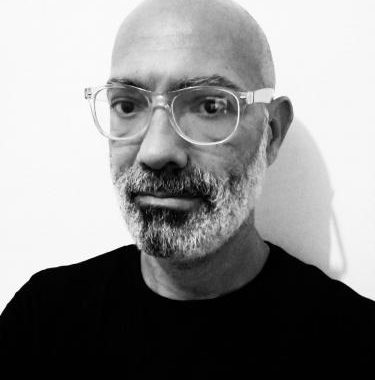
Frederico Pessoa is a brazilian sound artist and musician who has been presenting solo and group exhibitions, sound and multimedia performances and working with other artists in different projects and artistic languages.He has studied classical guitar and has a PhD in Arts from the Federal University of Minas Gerais. He is interested in the relations between sound and politics; sound and other artistic languages; sound, body and space; simple technologies and the vibrational aspect of day to day life and its effects on our bodies.
Artist Location: Belo Horizonte, Brazil
Social Media:
PARTICIPATION
Soundscapes [audio tracks] On-site and online June 4th
selling life
‘selling life’ is an excerpt of a recording in the Central Market of Belo Horizonte, where one can find birds and other animals confined in cages for selling. Side by side with vegetables, beverages, textiles, houhold utensils, and grocery stals, the animals become part of that enviroment as things, just as any other thing one can see and buy there. But they reveal a particularity: they make uncontrolable noises and, through that noise, they state their ilimitable vivacity.
iron, cast iron, steel and stainless steel
‘iron, cast iron, steel and stainless steel’ is a composition based on recordings of Vale S/A locomotives crossing downtown Belo Horizonte at night carrying ore. Vale S/A is responsible for the crimes committed in Brumadinho and Bento Rodrigues through the spillage of their dams that directly killed around 300 people, contaminated water courses and destroyed livelihoods in several locations around these dams. Mining companies and their shareholders, mainly based in the global north (USA, Europe and Japan), are the contemporary symbol of greedy, destructive and murderous capitalism, or neocolonialism, in the global south.
Earmaginations [silent videos] On-site and online June 4th
sounds of a vanishing world

‘sounds of a vanishing world’ is based on the bodily experience of crossing riparian forests near Rio Acima, in Minas Gerais, a region with many springs, waterfalls and exuberant natural life. At the same time, the region is surrounded by mining areas and tailings dams that pose an ongoing threat to natural forests, rivers, wildlife, animals and people. We don’t know how long these forests will be there.
Earmaginations [silent videos]
Your Song

Your Song is about the protests held in the streets of Belo Horizonte, Brazil, in 2013. At the same time, it is about any protest, any gathering in the streets to manifest for rights and democracy: being in the streets as group, where bodies move together, fists up, hands holding signs, hands holding hands, showing our bodies and faces, delimiting a territory occupied by our bodies in movement, creating waves of gestures and sounds. The protests design peculiar ways of being together and define particular rhythms, paces, melodies that bound people together. Protests create space for different voices to make themselves heard, different tones, different accents and different languages altogether. Protests are a moment of the construction of a unity in difference, which can be seen, felt, smelled, heard and even tasted. One can feel it through the flux that can be seen in those images that make Your Song.
As a complementary force, but that at the same time oppose the flux of energy in the protests, is the police: a strong symbol of the power of the State. The presence of the police is the certainty of the conflict between the forces: Your Song is about that conflict. We can feel the movements and the counter-movements as much as we can ‘hear’ them, even without the real sound. The flashes of the bombs, the gas, people running, the horses, the arms up, the shields – a multiplicity of rhythms, sensations and experiences that affect us as we watch those images.
VBODOBV | dEvolution: Personnel
What Can You Do?

What Can You Do? is firstly about the possibilities of connection between image and sound. The sound component is built with different materials that occupy and create a space with diverging and complementary planes, stereo image and movement. Sounds in the video travel in space and their different timbres and textures make our ears aware of the space they build, following their fluxes, rhythms and changes. At the same time, the images are rapidly changing, asking us to understand an avalanche of written signs with different shapes, texts, colors, sizes and messages. The idea is not only to provoke our senses in trying to connect those images to the sounds we listen, but to make a whole of what they say: to put together their continuous changes and the continuous flow of what we see and what we hear, the constant reshaping of the dialogue between sounds and images.
What can you do? is also about the limitations we put over ourselves in the choices we make regarding information that come from our senses, since we tend to create a hierarchy between what come from them when trying to understand the world. Culturally, we tend to privilege our eyes over other senses, but What can you do? tries to make us sway. We vacillate in trying to put together and in an order what you feel and think while hearing/watching the video. Here the idea of short circuit is paramount, since the work tries to provoke a sort of short circuit in our culturally built way of sensing things.
